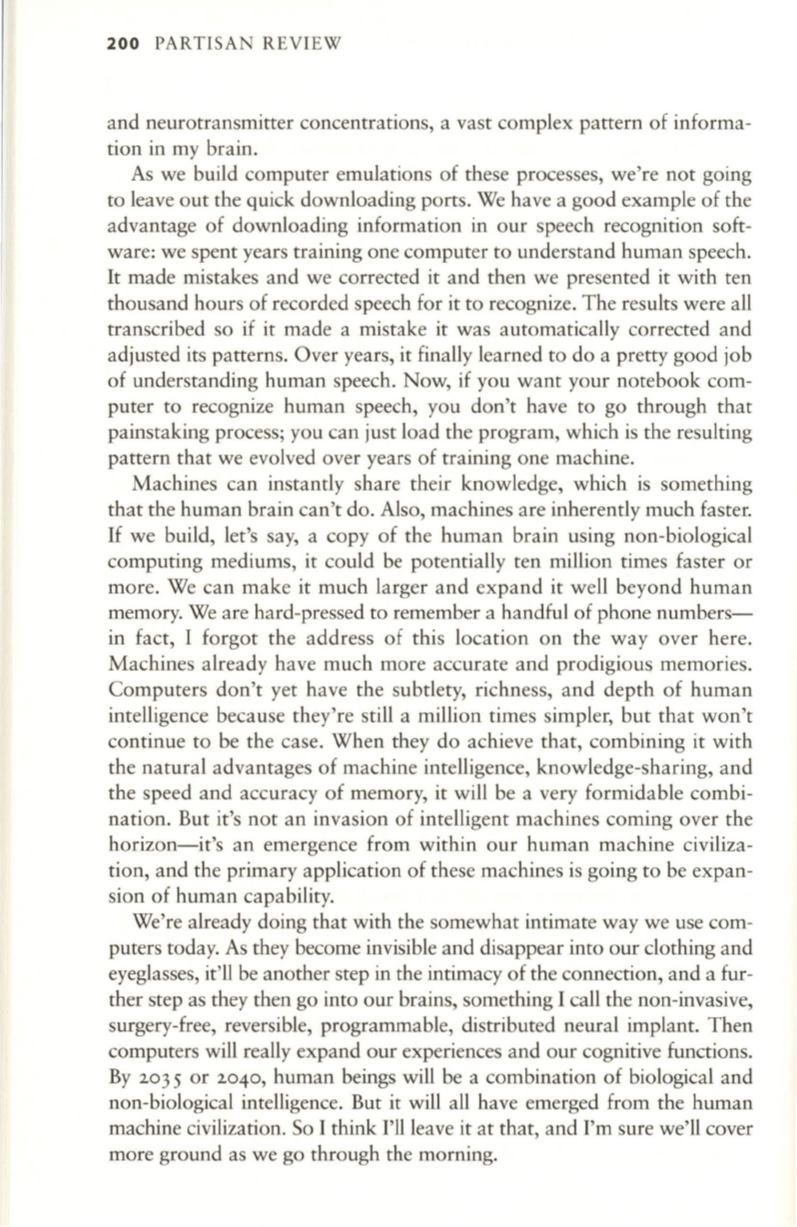
200
PARTISAN REVIEW
and neurotransmitter concentrations, a vast complex pattern of informa–
tion in my brain.
As we build computer emulations of these processes, we're not going
to leave out the quick downloading ports. We have a good example of the
advantage of downloading information in our speech recognition soft–
ware: we spent years training one computer to understand human speech.
It
made mistakes and we corrected it and then we presented it with ten
thousand hours of recorded speech for it to recognize. The results were all
transcribed so if it made a mistake it was automatically corrected and
adjusted its patterns. Over years, it finally learned to do a pretty good job
of understanding human speech. Now, if you want your notebook com–
puter to recognize human speech, you don't have to go through that
painstaking process; you can just load the program, which is the resulting
pattern that we evolved over years of training one machine.
Machines can instantly share their knowledge, which is something
that the human brain can't do. Also, machines are inherently much faster.
If
we build, let's say, a copy of the human brain using non-biological
computing mediums, it could be potentially ten million times faster or
more . We can make it much larger and expand it well beyond human
memory. We are hard-pressed to remember a handful of phone numbers–
in fact, I forgot the address of this location on the way over here.
Machines already have much more accurate and prodigious memories.
Computers don't yet have the subtlety, richness, and depth of human
intelligence because they're still a million times simpler, but that won't
continue to be the case. When they do achieve that, combining it with
the natural advantages of machine intelligence, knowledge-sharing, and
the speed and accuracy of memory, it will be a very formidable combi–
nation. But it's not an invasion of intelligent machines coming over the
horizon-it's an emergence from within our human machine civiliza–
tion, and the primary application of these machines is going to be expan–
sion of human capability.
We're already doing that with the somewhat intimate way we use com–
puters today. As they become invisible and disappear into our clothing and
eyeglasses, it'll be another step in the intimacy of the connection, and a fur–
ther step as they then go into our brains, something I call the non-invasive,
surgery-free, reversible, programmable, distributed neural implant. Then
computers will really expand our experiences and our cognitive functions .
By
2035
or
2040,
human beings will be a combination of biological and
non-biological intelligence. But it will all have emerged from the human
machine civilization. So I think I'll leave it at that, and I'm sure we'll cover
more ground as we go through the morning.


